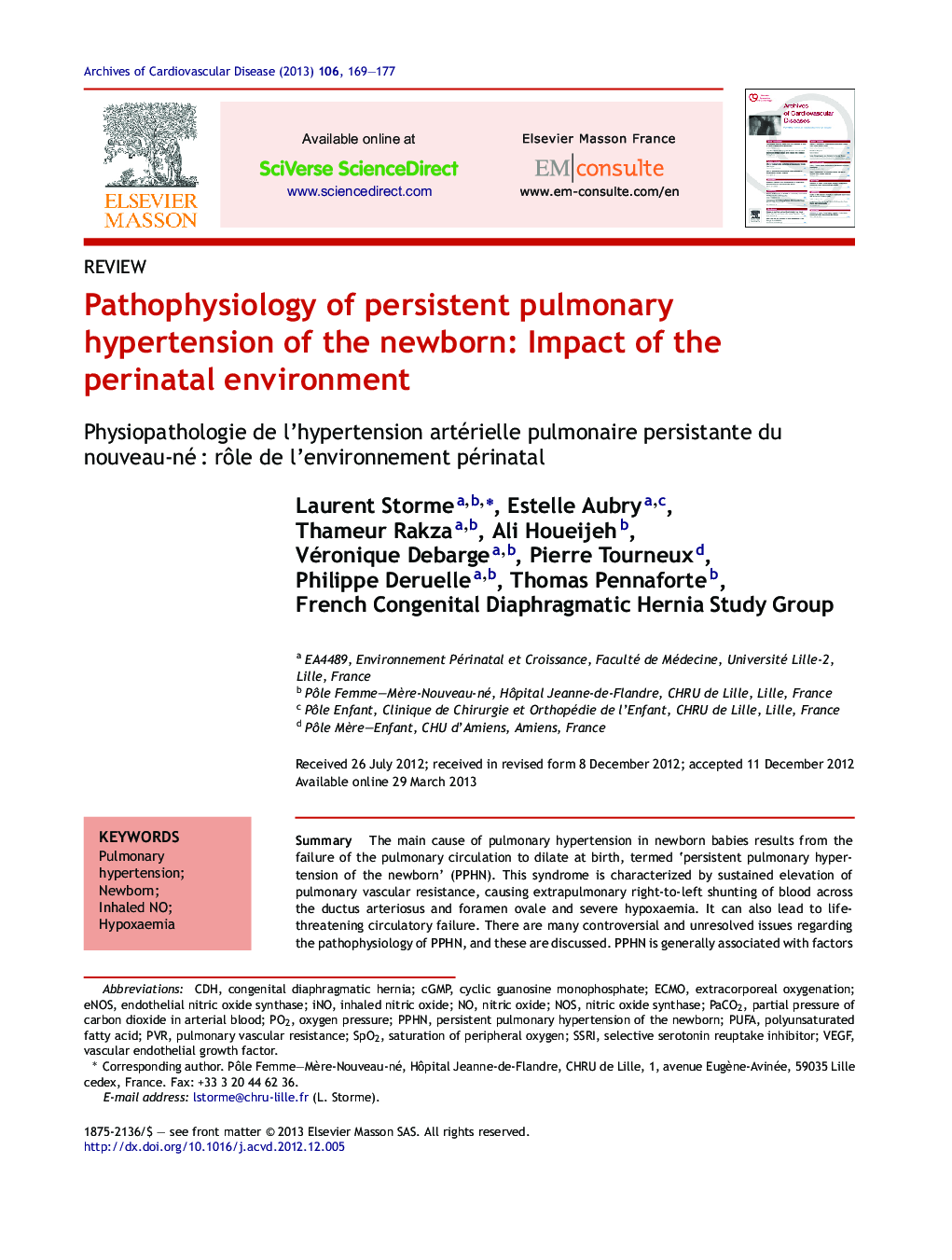| کد مقاله | کد نشریه | سال انتشار | مقاله انگلیسی | نسخه تمام متن |
|---|---|---|---|---|
| 2889089 | 1574366 | 2013 | 9 صفحه PDF | دانلود رایگان |

SummaryThe main cause of pulmonary hypertension in newborn babies results from the failure of the pulmonary circulation to dilate at birth, termed ‘persistent pulmonary hypertension of the newborn’ (PPHN). This syndrome is characterized by sustained elevation of pulmonary vascular resistance, causing extrapulmonary right-to-left shunting of blood across the ductus arteriosus and foramen ovale and severe hypoxaemia. It can also lead to life-threatening circulatory failure. There are many controversial and unresolved issues regarding the pathophysiology of PPHN, and these are discussed. PPHN is generally associated with factors such as congenital diaphragmatic hernia, birth asphyxia, sepsis, meconium aspiration and respiratory distress syndrome. However, the perinatal environment–exposure to nicotine and certain medications, maternal obesity and diabetes, epigenetics, painful stimuli and birth by Caesarean section–may also affect the maladaptation of the lung circulation at birth. In infants with PPHN, it is important to optimize circulatory function. Suggested management strategies for PPHN include: avoidance of environmental factors that worsen PPHN (e.g. noxious stimuli, lung overdistension); adequate lung recruitment and alveolar ventilation; inhaled nitric oxide (or sildenafil, if inhaled nitric oxide is not available); haemodynamic assessment; appropriate fluid and cardiovascular resuscitation and inotropic and vasoactive agents.
RésuméLa principale cause d’hypertension pulmonaire du nouveau-né résulte d’une vasodilatation pulmonaire insuffisante à la naissance, appelée « hypertension artérielle pulmonaire persistante du nouveau-né » (HTAPP). Ce syndrome est caractérisé par une élévation des résistances vasculaires pulmonaires, responsable d’un shunt droit-gauche par le foramen ovale et le canal artériel et d’une profonde hypoxémie. L’HTAPP est à risque vital lorsque qu’elle s’accompagne d’une défaillance circulatoire. La prise en charge nécessite un recrutement pulmonaire adéquat, l’inhalation de monoxyde d’azote et un support cardiovasculaire adapté. Néanmoins, la physiopathologie et la prise en charge sont toujours l’objet de recherches innovantes. Ainsi, de plus en plus d’arguments existent pour penser que l’environnement périnatal joue un rôle déterminant dans la genèse et l’aggravation de ce syndrome.
Journal: Archives of Cardiovascular Diseases - Volume 106, Issue 3, March 2013, Pages 169–177